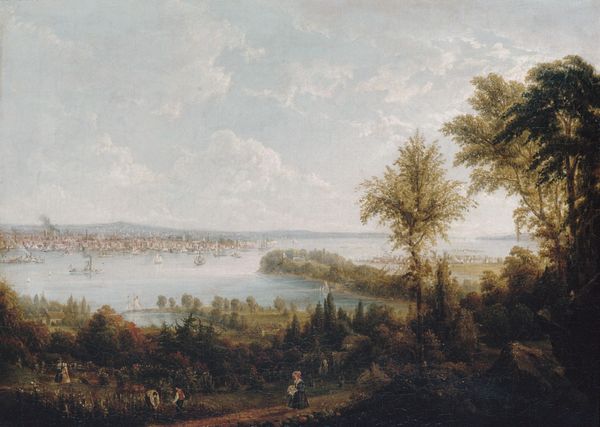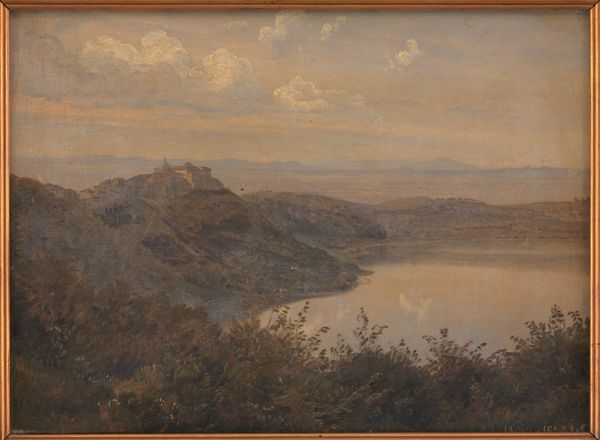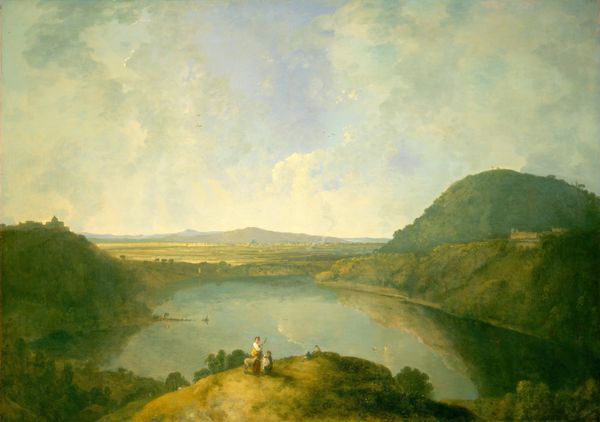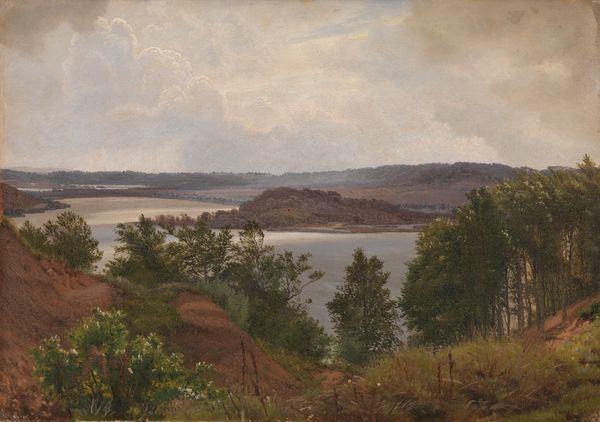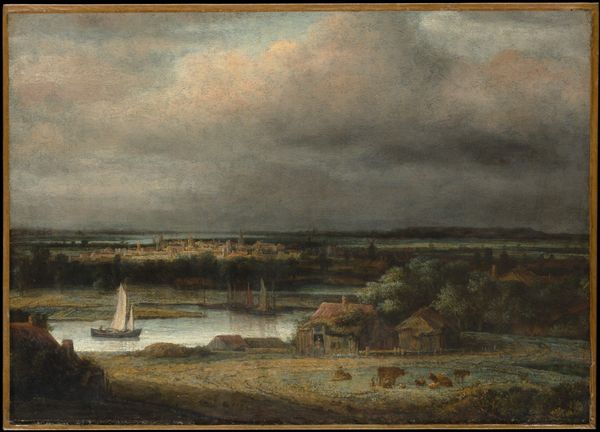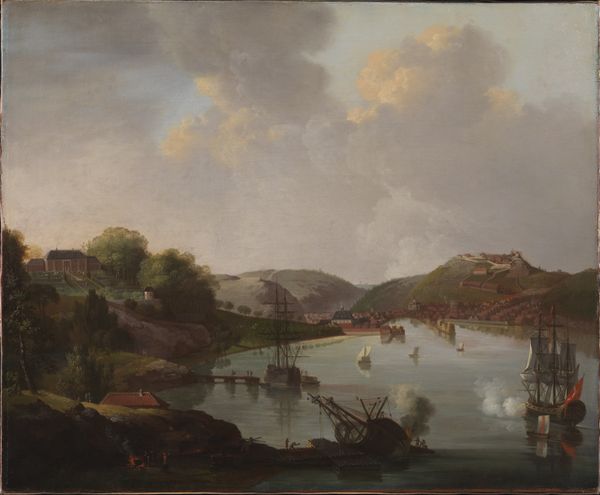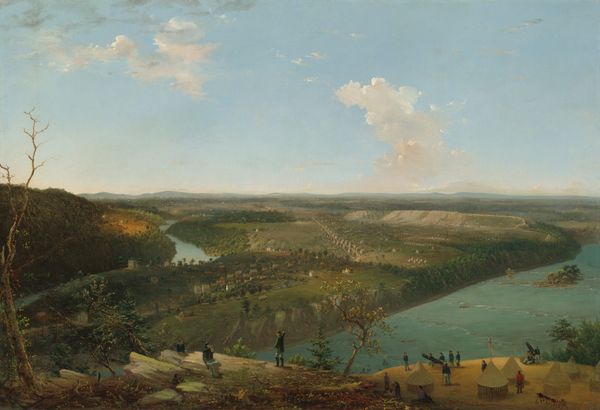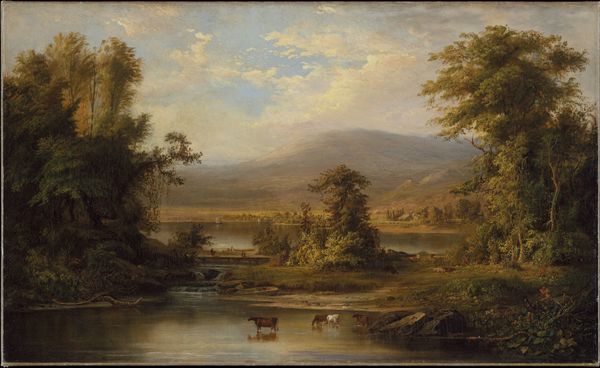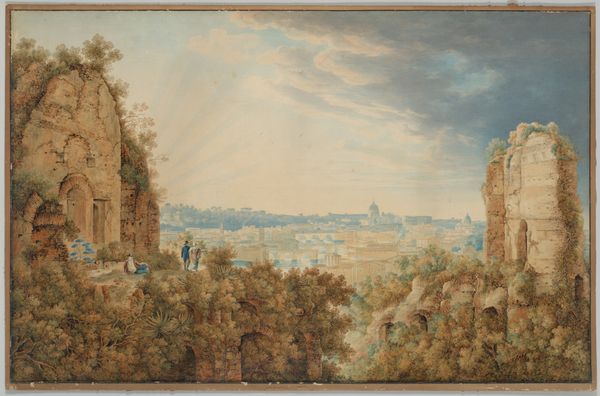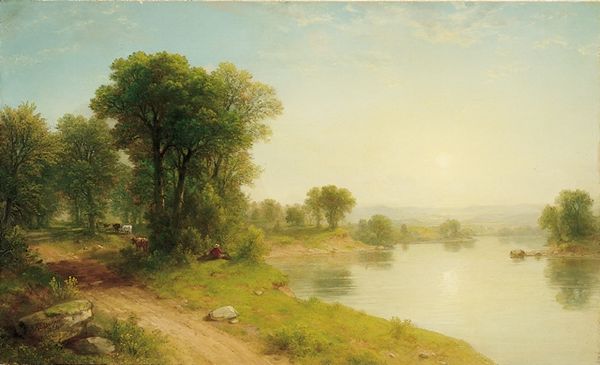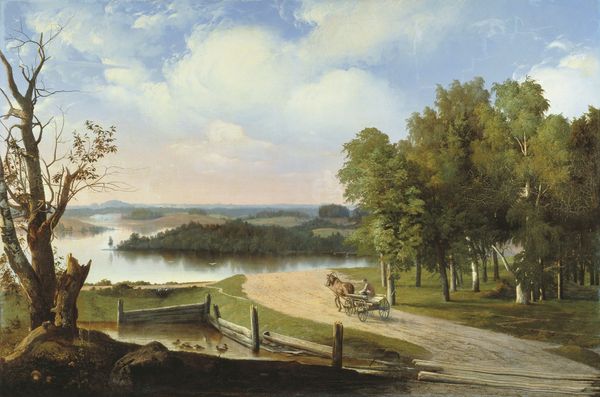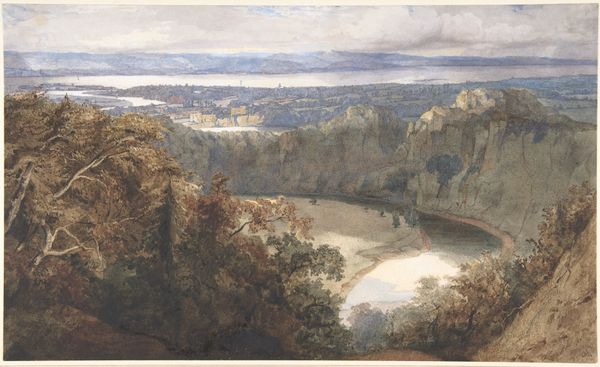
The Hudson River Valley near Hudson, New York 1845 - 1855
0:00
0:00
plein-air, oil-paint
#
plein-air
#
oil-paint
#
landscape
#
river
#
nature
#
romanticism
#
hudson-river-school
Dimensions: 19 x 22 1/8 in. (48.3 x 56.2 cm)
Copyright: Public Domain
Curator: This painting, “The Hudson River Valley near Hudson, New York,” was rendered anonymously sometime between 1845 and 1855. It’s an oil-on-canvas, exemplifying plein-air painting, a key feature of the Hudson River School movement. Editor: My first impression is one of profound peace. The vast, luminous sky dominating the composition and the sinuous curves of the river evoke a sense of calm reflection. The figures, both human and canine, seem dwarfed by the majesty of the landscape. Curator: Absolutely. The painting showcases the romantic idealization of the American landscape that defined the Hudson River School. Notice how the painter captures the grandeur of nature, subtly suggesting the promise and potential of the American frontier. Editor: And the presence of the two men, positioned at opposing ends, adds an element of depth. To me, the man seated on the bluff seems to be a latter-day version of the “noble savage,” communing with nature. The man standing looks to be contemplating the new frontier of natural possibility, and how he could partake. Both figures represent aspects of taming of the “new world” – nature's raw power juxtaposed with the beginnings of cultivation, even leisure. Curator: You've hit on something essential. The contrast between the wildness of the nature and the figures is deliberate. Artists during this period used this tension to explore America’s changing identity and its relationship to the natural world, especially how one would claim dominance in such a landscape. It mirrors the larger debate around westward expansion, conservation, and economic development. Editor: I see strong symbolic implications too. Water signifies fluidity, transformation and purification; and here the meandering river could symbolize life's journey or the endless possibilities the natural landscape allows. And the contrast in their outfits would imply where they lie on the social order. Even their animals project this difference: the hunting dog, active, moving, looking for opportunities contrasts with the resting domesticated house pet of the sitter. Curator: It’s insightful how you trace the river’s symbolism. The placement of figures, their interactions—or lack thereof—within the landscape underscores that this period was all about man versus nature. But I must interject that it is all romanticization and projection! Editor: Still, it’s intriguing to think of the possible readings. Seeing through today's perspective adds a layer of modern significance that informs how we perceive these depictions of historical figures within the American landscape. Curator: Agreed. "The Hudson River Valley near Hudson, New York" gives a snapshot of a pivotal moment in American history, ripe with questions about land, identity, and purpose. Editor: And a rich landscape of symbols where viewers can ponder the roles and place in this historical landscape.
Comments
No comments
Be the first to comment and join the conversation on the ultimate creative platform.
